Are Squat Shoes Worth It? Benefits Explained
Author:
Reviewed by:
(21 years of Oly Lifting experience)
Unlock your full potential by engaging with our experts and community! Have questions about your fitness journey or looking for expert advice on weightlifting techniques? Don’t hesitate — leave a comment below and Ihor Shymechko will provide a personalized answer and insights to help you reach your goals.
Torokhtiy is reader-supported. Some links are affiliate links, and we may earn a commission at no extra cost to you. See our disclosure page for details.
When it comes to weightlifting, every little detail counts, from your form to the equipment you use. One piece of gear that’s often a subject of debate is lifting shoes. Do you need them? Do they do anything? Are they just a way for brands to get you to spend even more money than you already are?
Squat shoes are designed to give you extra support, stability, and range of motion during lifts. They have a raised heel, firm sole, and secure fit, all of which can help improve your performance and reduce the risk of injury.
So, are they worth it? Yes. Do you absolutely need them? That’s something you’ll need to answer for yourself, but we’ll make it easier on you and provide all the information on squatting shoes you should know.
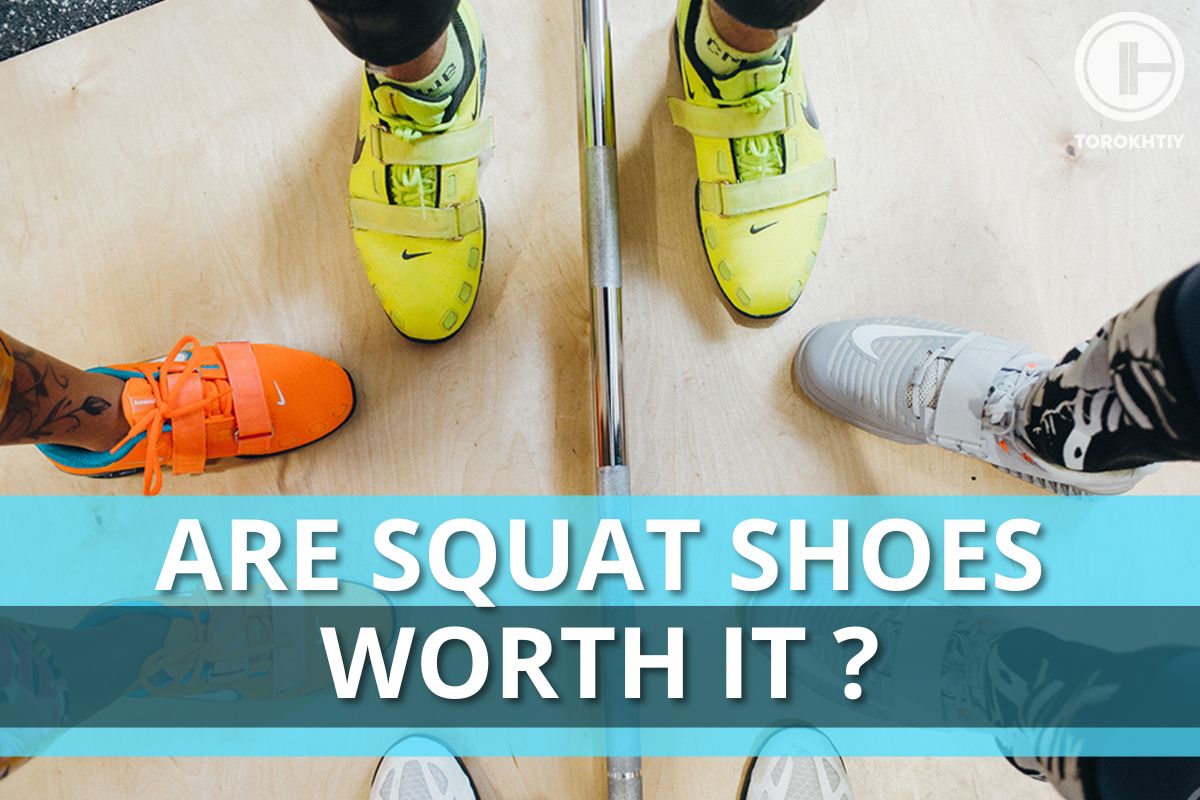
Squat Shoes
Squat shoes are hard-soled lifting shoes designed with a heel lift to give you an elevated heel position when wearing them. They are used by lifters in a wide range of lifting events and sports, with factors such as heel height, upper materials, closure mechanism, and type of heel all changing the most suitable use.
When looking at the anatomy of a squat shoe, it can be broken down into four main parts. These are the upper, the midsole, the outsole, and the heel.
The upper is the top half of the squat shoe, commonly consisting of synthetic leather, leather, or PU. Additional layers can be added around the hell area to provide extra support. A large single strap is usually placed over the middle of the foot, with double straps or an additional strap around the ankle included on some squat shoes to offer better support.
At the front of the upper, the toe boxes are usually large enough to allow toe splaying.
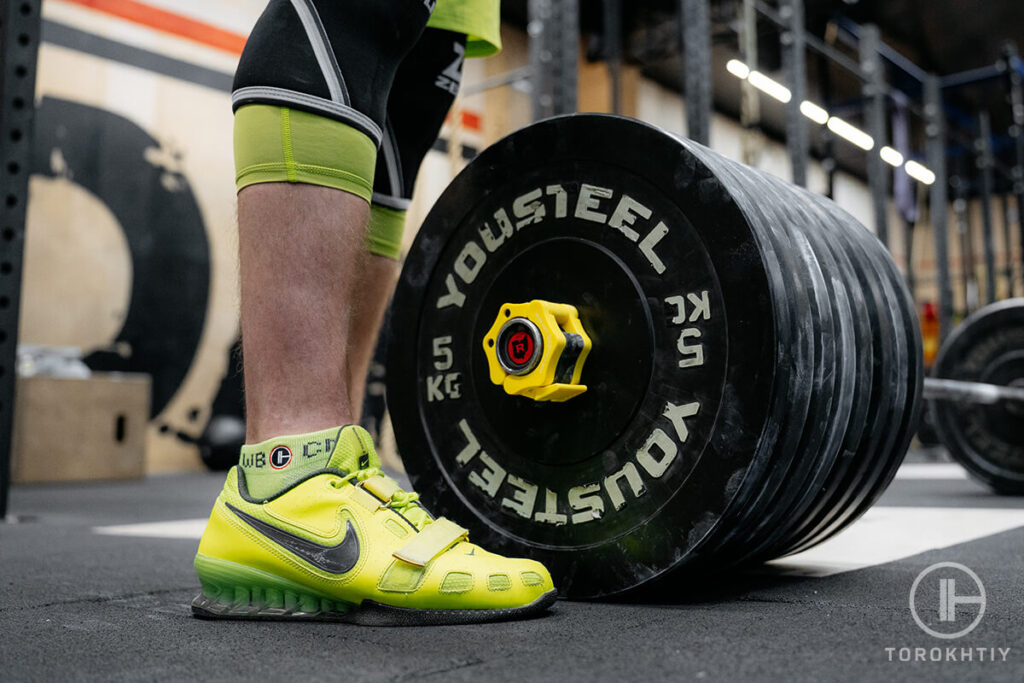
The midsole is the top part of the shoe sole or the part that makes contact with your feet. Most squat shoe midsoles are made of TPU, with some consisting of multi-density EVA. Good midsoles need to be lightweight, offer good support, absorb impact and react to your movement.
The outsole is the bottom portion of the shoe or the bit that touches the ground. It mainly comprises anti-slip textured rubber to provide traction and flexibility. Many brands differ massively in outsole design to offer unique shoe characteristics, with some including small amounts of TPU on the underside.
The heel is the main defining feature of squat shoes that set them apart from normal sports shoes. Heel elevations typically range from ½” to 1″ and are made of stacked TPU layers.
Now that you’re more familiar with the anatomy of squat sneakers, here are the pros and cons of wearing them:
Positives:
Could be better:
Why Wear Squat Shoes?
Purchasing a pair of shoes to squat in offers multiple biomechanical and performance benefits over using normal shoes:
1. Biomechanics
One of the main considerations when performing back squats is keeping a neutral spine throughout the full movement. Multiple studies have shown that wearing squat shoes helped to reduce forward lean and therefore reduce the amount of stress on the lumbar spine during lifting.
2. Mobility
Due to the heel-to-toe drop built into squat shoes, the tibia bone comes further forward when squatting. This allows the knees to travel forward, compensating for ankle dorsiflexion mobility issues. With this, you’re able to lower your hips further, therefore achieving a deeper squat position compared to not using squat shoes.
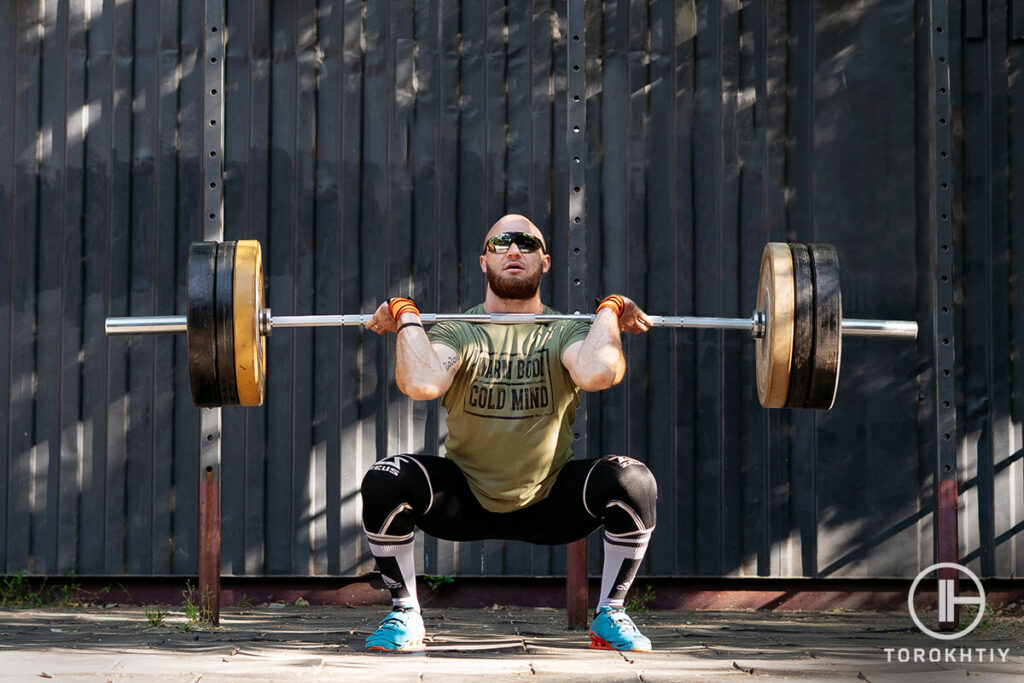
3. Performance
Improved biomechanics and mobility lead to better squat performance. By promoting a better lifting position, wearing squat shoes helps to prevent injury and therefore promotes better training periods, positively impacting performance.
An increase in mobility helps you to focus on other performance cues when looking to improve your numbers without focusing on ankle mobility.
How to Choose the Best Squat Shoes?
When considering the best squatting shoes to purchase, consider these main factors:
1. Heel Elevation
Heel elevation is one of the biggest factors that set squat shoes apart, and also the first thing you’ll notice after putting a pair on.
The height of the heel elevation changes your biomechanics when squatting and therefore can have a huge impact on performance. Lifters who struggle with mobility will likely benefit the most from a bigger heel, as it will help you to keep more upright when squatting.
Conversely, some lifters may prefer the feeling of a flatter squat shoe. The right pair for you comes down to personal choice, body dimensions, and the exercise you’re performing.
2. Shoe Closure
Show closure refers to the mechanism used to keep the squat shoes tightly against the feet during lifting. Closure options include single straps, double straps, and lacing, all of which affect the amount of security provided by the shoe.
Double straps with heavy lacing provide the most security, whilst single straps allow more movement but offer less security. The right closure mechanism for you may also depend on the exercise you’re performing. Dynamic exercises that require you to shift your weight through your feet may be better suited to single-closure mechanisms.
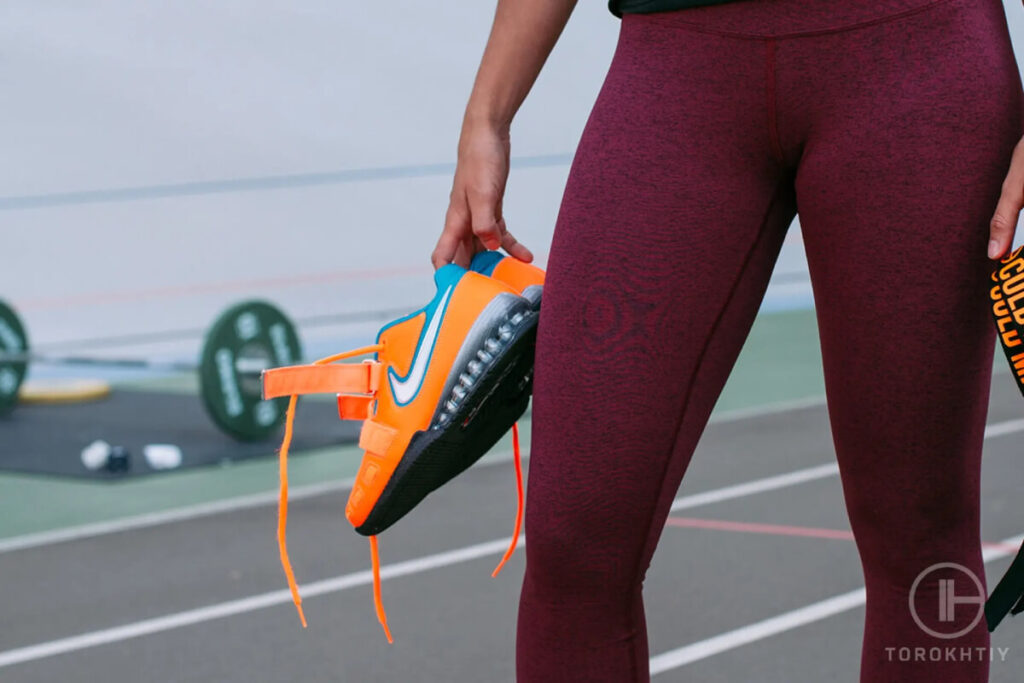
3. Heel Type
Different heel types include TPU, EVA, PU stacked leather, and wood. Each of these materials offers different comfort, stability, and performance. Usually, the right heel type for you is mainly decided by the type of exercise you’re performing and personal taste.
TPU stands for Thermoplastic polyurethane, which is a type of synthetic plastic. TPU heels are resistant to compression, lightweight, and durable. EVA is short for Ethyl vinyl acetate, which is a foam-like material mostly found in the midsole of a squat shoe.
EVA provides good support, and shock absorption, and has a bounce when pushed against a surface. EVA is breathable but tends to have less durability compared to TPU and other materials.
Polyurethane (PU) is another form of synthetic plastic found in squat shoe midsoles. It’s more durable compared to EVA but offers less compression and support. Leather heels provide great platform feedback with some compression. Wood hills offer no compression and have an old-school appearance.
Tips From the Champ
To choose the best squat shoes, prioritize heel elevation based on your biomechanics and preferences. Consider the closure mechanism, opting for double straps for maximum security or single straps for more movement. Evaluate different heel types like TPU, EVA, PU stacked leather, or wood, selecting based on your comfort, stability needs, and the type of exercises you perform.
Olympic Weightlifting Champion
4. Shoe Materials
When considering different shoe materials, you need to think about three main factors – comfort, durability, and breathability.
Leather looks nice and offers great durability but may not be as breathable as mesh or textile materials. Having breathable materials makes the shoes more comfortable and lightweight but impacts durability.
5. Training and Sport Type
Before purchasing, consider the type of training and/or sport you’re wanting to use the shoes for. The different designs, materials, and shoe types used provide specific benefits based on your movements and speed.
If your training consists of mostly low bar squats, both raised and flat-heel shoes are well suited. If you perform more high-bar squats, go with a raised heel.
Performing dynamic lifting movements such as cleans and split jerks requires shoes designed using flexible material so it doesn’t affect your movement. In this case, leather might not be your best option.
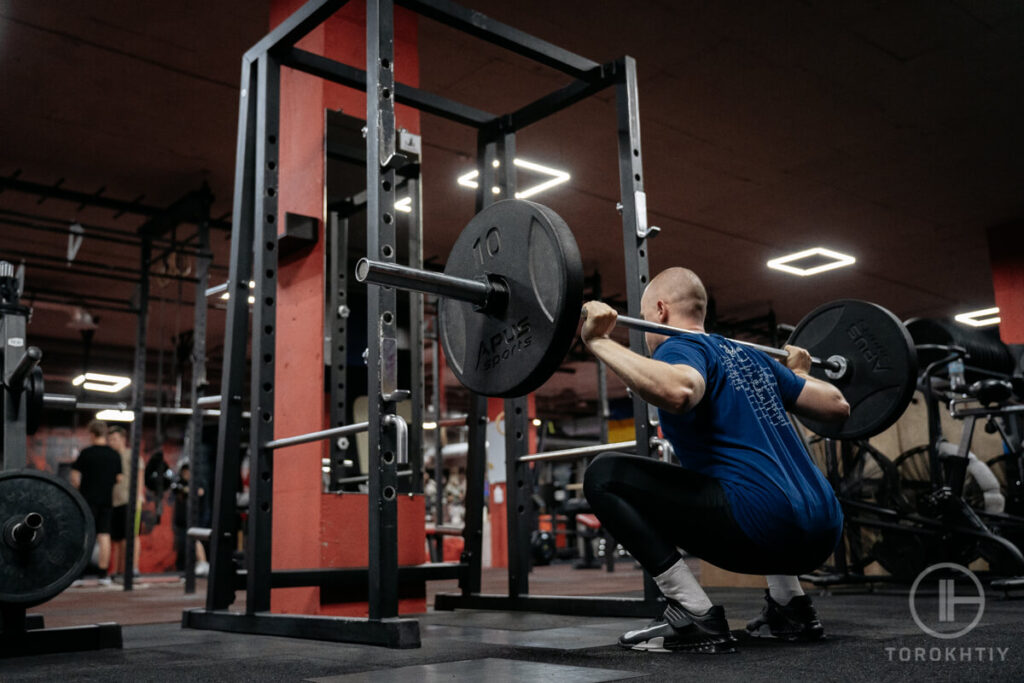
If you’re performing lots of high-intensity interval training in an environment where you tend to sweat a lot, a breathable shoe might be a good idea.
These are just some of the considerations to think about when choosing the right shoe for your chosen sport or lifting movement.
Reebok Legacy Lifter II
UPDATE!
Here’s a new model – Reebok Legacy Lifter III that can become a true discovery for those who are fans of the Legacy Lifter model, or their Lifters II are already out.
Despite the model has lots in common with the Legacy Lifter II, it has a novelty – the pump technology which can be useful for enlarging the volume of the tongue. This feature can benefit athletes with narrow feet by bringing better support and security, so the shoes hug the feet wholly.
Reebok is a global fitness brand with the mission statement ‘To be the best fitness brand in the world’. They look to produce revolutionary fitness and lifestyle products to improve fitness and performance.
These shoes have been designed using an anatomical shape, meaning the shoes naturally mold around your feet to offer maximum support and help to transfer force through your feet to the floor.
The textile upper allows a smooth and comfortable airflow, with the antimicrobial lining helping to reduce heat in the shoe and abrasions when lifting.
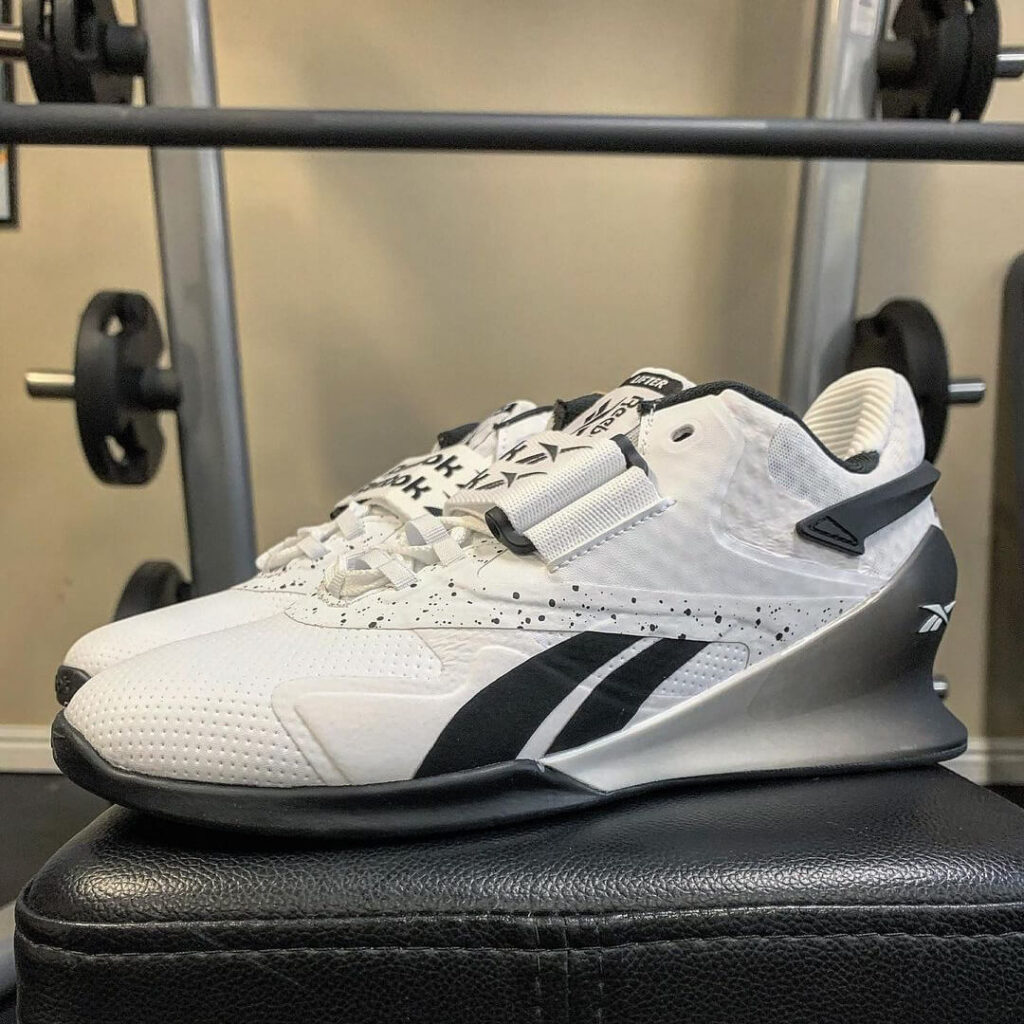
In terms of the heel lift, it’s higher than comparable squat shoes at 22 mm (0.86″ ). This makes the Legacy Lifter II shoes a great choice if you’re someone who struggles with ankle mobility. The heel is made of TPU, which gives you great durability with little compression.
The removable strap is an excellent design feature, allowing you to tighten or loosen the shoes when you feel you need to. The textured traction outsole pattern provides excellent grip with lifting, giving you the confidence to lift without worrying about slipping or moving around.
Overall, Reebok has designed an excellent pair of shoes for squatting, giving you some extra design features over the old model and clever touches that add to the lifting experience.

FAQ
Is It Okay to Squat in Running Shoes?
With the kinematics of running completely different compared to squatting, wearing running shoes to squat in isn’t advised. If you do choose to wear them, they can make you off balance which impacts the amount of force you can generate off the floor.
Are Squat Shoes Worth It?
Squat shoes may seem like a big investment at first, but they are worth the money when you consider the benefits. Alongside helping to increase your lifting numbers, the heel can help with mobility issues and get you used to the correct movement pattern.
Is It Better to Squat With Flat Shoes?
Squatting with flat shoes vs a raised-heel depends on the squat variation you’re doing and the amount of lifting experience you have. Both flat and raised-heel shoes go well with low bar squats, whilst high bar squats are better with raised heel shoes. If your ankle mobility is fine and you prefer flat-lifting shoes, feel free to use them.
Conclusion – Best Squatting Shoes
Squat shoes provide a great range of lifting benefits which lead to improved performance. The best oly shoes for squats depend on a mixture of your body dimensions, the exercises you want to perform, and personal choice.
The Reebok Legacy Lifter II Squat Shoes and their new model Reebok Legacy Lifter III are some of the best lifting shoes you’ll come across, which is why I recommend them so highly.
Have you worn them, and if you have, how do you like them? What differences can you feel when lifting? Do you have another pair of shoes to recommend? Let me know in the comments.
Also read:
References:
- Jake Boly “Flat Vs Heel Elevated Shoes In Squats | Which Is Best for You?” ThatFitRriend. February 8, 2022 https://thatfitfriend.com/flat-vs-heel-elevated-shoes-squats/
- Sarah Dalton “What Is a Neutral Spine, Anyway?” HealthLine. Published Feb 27, 2018 https://www.healthline.com/health/fitness/what-is-a-neutral-spine-anyway
- Kimitake Sato, Dave Fortenbaugh, David S Hydock “Kinematic changes using weightlifting shoes on barbell back squat” J Strength Cond Res. 2012 Jan;26(1):28-33. https://pubmed.ncbi.nlm.nih.gov/22201687/
- Nicholas Rizzo “The Complete Science-Backed Guide to Lifting Shoes: Barefoot and Beyond” RunRepeat. Posted on 03 November, 2023 https://runrepeat.com/complete-guide-lifting-shoes
- Photos are made by Torokhtiy Media Team
Why Trust Us?
With over 20 years in Olympic weightlifting, strength training, nutrition coaching, and general fitness our team does its best to provide the audience with ultimate support and meet the needs and requirements of advanced athletes and professional lifters, as well as people who strive to open new opportunities and develop their physical capabilities with us.
By trusting the recommendations of our certified experts in coaching, nutrition, and sports training programming, as well as scientific consultants, and physiotherapists, we provide you with thorough, well-considered, and scientifically proven content. All the information given in the articles concerning workout programming, separate exercises, and athletic performance, in general, is based on verified data.
The product testing process is described in more detail here.
Author: Ihor Shymechko
Pro Olympic Weightlifter, Coach
Best Results: Snatch – 208 kg,
C&J – 240 kg
Ihor has been a professional weightlifter since 1996, boasting over two decades of competition experience. His notable achievements include clinching the European Championship in 2009 and securing a silver medal in the 105kg division at the Senior World Championships in 2011. Ihor represented his country in the 2008, 2012, and 2016 Summer Olympics. After retiring from competitive weightlifting, he transitioned to coaching, leveraging his vast experience to guide athletes who now compete on both national and international stages.
Reviewed by: Oleksiy Torokhtiy
Olympic Weightlifting Champion
Best Results: Snatch – 200 kg,
C&J – 240 kg
Oleksiy Torokhtiy is a professional athlete boasting 20 years of experience in Olympic weightlifting. With multiple European and World titles under his belt, he has showcased his prowess in two Olympic Games (Beijing 2008 and London 2012). Upon concluding his illustrious career, Oleksiy dedicated himself to coaching. By 2022, he had conducted over 200 weightlifting seminars worldwide. He is the visionary behind an international sportswear and accessories brand known for its motto, “Warm Body Cold Mind.” Additionally, he is an esteemed author and the creator of a series of training programs and eBooks.



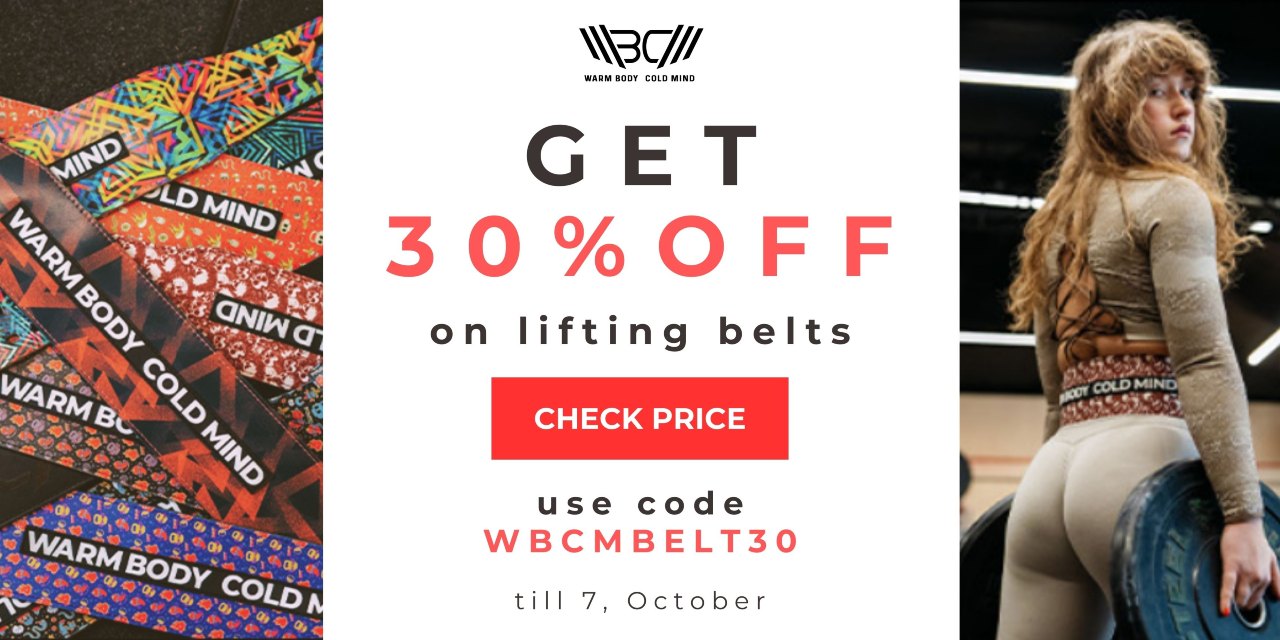

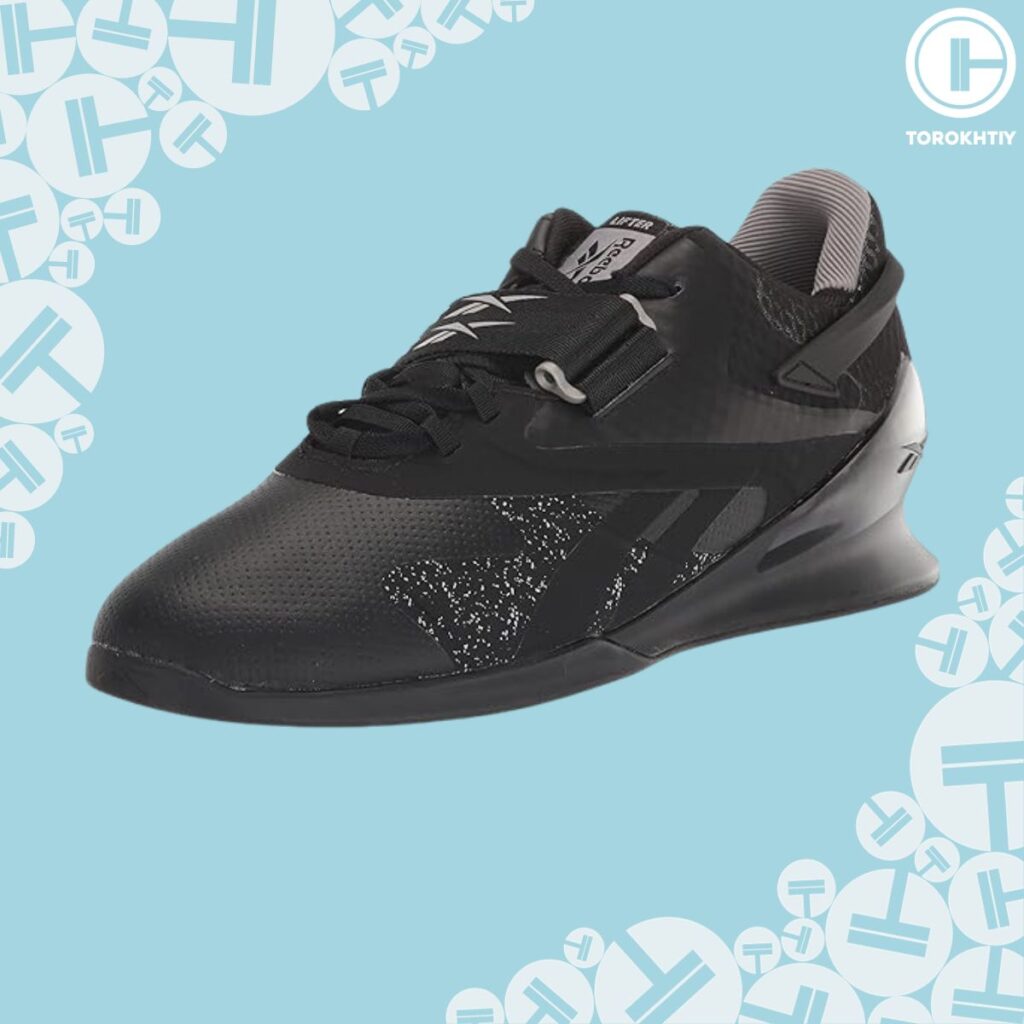
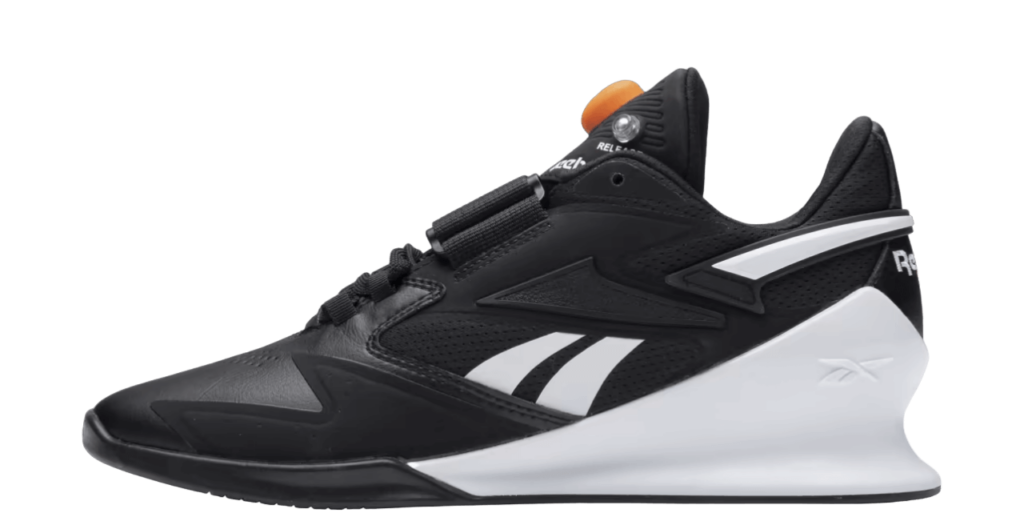
Still have questions after reading our article? Unlock your full potential by engaging with our experts and community! Don’t hesitate — leave a comment below and Ihor Shymechko will provide a personalized answer and insights to help you reach your goals.